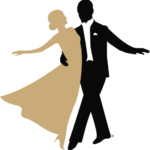💃 Dancing as the Ultimate Self-Care Routine
✨ Introduction: Redefining Self-Care Through Movement
Self-care is no longer just about spa days, journaling, or green smoothies. In a fast-paced, high-stress world, many are turning to more dynamic, holistic forms of wellness—ones that nourish the body, clear the mind, and uplift the spirit all at once. One practice continues to stand out as both joyful and transformational: dancing as the ultimate self-care routine.
Dance is more than entertainment or exercise. It’s a powerful form of self-expression, release, and restoration. Whether you’re dancing solo in your living room or participating in a structured class, the benefits extend far beyond the physical. When integrated into your lifestyle, dancing becomes a rhythm of healing, connection, and empowerment.
✅ 1. Dance Connects You to the Present Moment
One of the foundational aspects of any self-care practice is mindfulness—the ability to stay connected to the present. Dance demands this kind of awareness. Each step, turn, and breath brings your focus away from external chaos and back into your body.
The act of synchronizing movement with music creates a sensory experience that calms racing thoughts and grounds the nervous system. This full-body presence functions like a moving meditation, helping you let go of the past, stop worrying about the future, and simply be here, now.
“When I dance, I can forget everything and just exist,” said one participant in a wellness-focused movement study.
This moment-to-moment awareness is the essence of dancing as the ultimate self-care routine—you’re not only moving but also deeply listening to your body and emotions.
✅ 2. Dance Naturally Releases Stress and Boosts Mood
Movement is one of the most effective stress relievers, and dancing amplifies that benefit by combining physical exertion with music and expression. When you dance, your body releases:
Endorphins – natural mood boosters
Dopamine – linked to pleasure and motivation
Serotonin – a key player in emotional regulation
Oxytocin – the “bonding hormone,” especially in partner dancing
This chemical cocktail has been shown to reduce anxiety, lower cortisol levels, and alleviate symptoms of depression. Unlike other workouts that can feel punishing or rigid, dance taps into your joy center, making it not only sustainable, but something you look forward to.
This is what makes dancing such a powerful self-care tool—it’s a healing practice disguised as fun.
✅ 3. Dancing Builds Confidence and Body Positivity
Part of self-care is cultivating a healthy relationship with yourself—and that includes how you see and feel in your body. Dance allows you to explore movement without judgment, focusing on what your body can do rather than how it looks.
Over time, dancers report:
Greater postural awareness
Improved self-image and acceptance
A deeper sense of self-expression through movement
This confidence doesn’t stop on the dance floor. The grace, strength, and ease you develop while dancing ripple into how you show up in the world—whether it’s speaking up in a meeting, going out socially, or simply walking taller and feeling better in your skin.
When it comes to dancing as the ultimate self-care routine, this internal empowerment is one of the most transformative gifts.
✅ 4. Dance Creates Emotional Release and Expression
We often store unprocessed emotions in our bodies—tension in the shoulders, a knot in the stomach, restlessness in the limbs. Dance provides a safe, creative outlet to release and express those emotions.
Through movement, you can:
Process grief, anger, or sadness without words
Reconnect to joy, sensuality, or playfulness
Move through emotional blocks that talking alone can’t access
Different styles of dance offer different emotional landscapes: the fluidity of Rumba for softness, the fire of Tango for intensity, the bounce of Swing for joy. No matter the style, dancing becomes a language for your inner world—one that can shift your mood, reframe your day, or even help you heal.
✅ 5. Dance Encourages Consistency Through Joy
The most effective self-care routines are the ones we actually stick with. Dance has a unique advantage here—it’s fun. Instead of forcing yourself to check a box or power through a workout, dancing invites you to move in a way that feels good and lights you up.
Because it engages your mind, body, and heart all at once, dance becomes a ritual you crave—not an obligation you resist. Whether it’s five minutes of dancing in your kitchen or an hour-long class, it’s accessible, rewarding, and endlessly renewable.
Joy is not a luxury—it’s a requirement for wellness. Dance gives you that joy on demand.
🎯 Conclusion: Movement as Medicine
In a world that often feels heavy, repetitive, or disconnected, dance offers a return to something essential: joy, expression, and freedom. Dancing as the ultimate self-care routine isn’t just about moving—it’s about healing, feeling, and becoming whole again.
So the next time you feel stressed, low, or simply out of sync, turn on your favorite song and move. You’ll be surprised how quickly your energy shifts. Sometimes, the most powerful form of self-care is the one that comes naturally—through rhythm, breath, and your own two feet.

